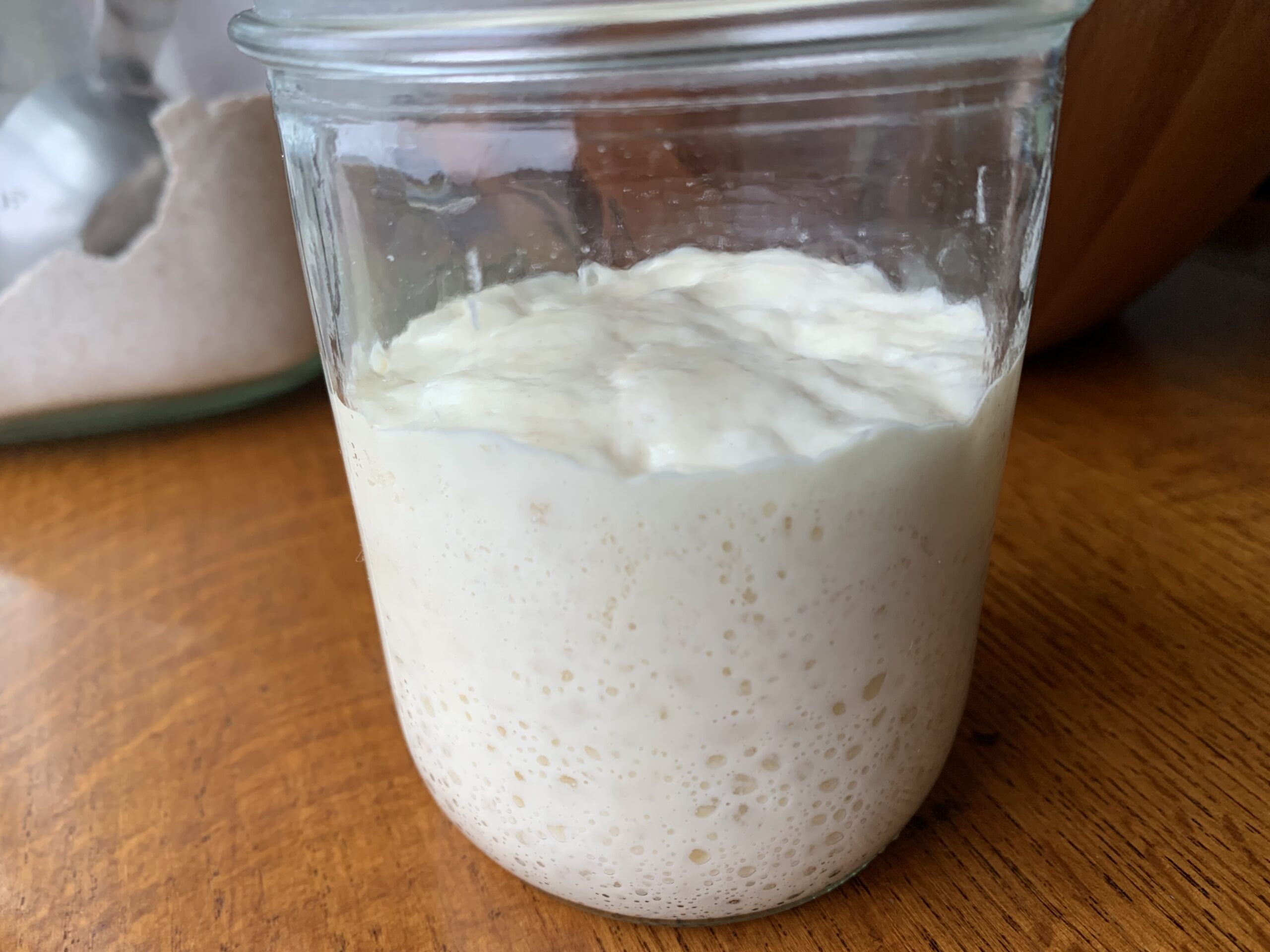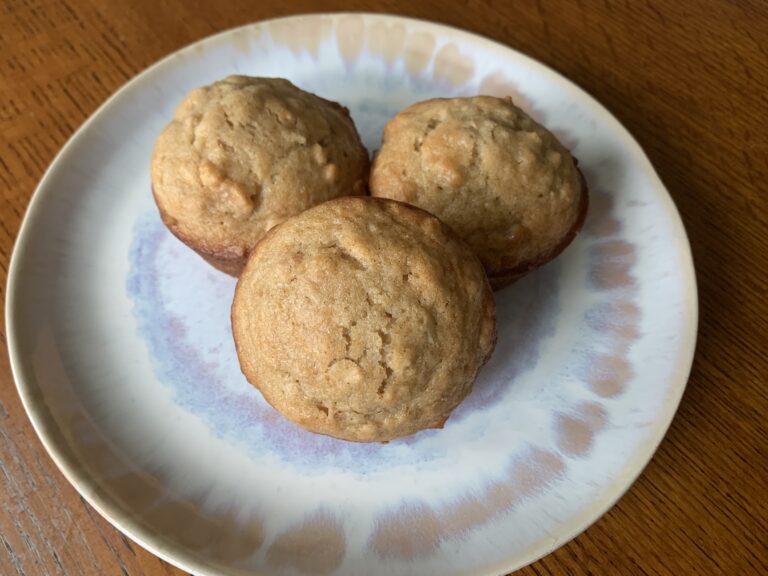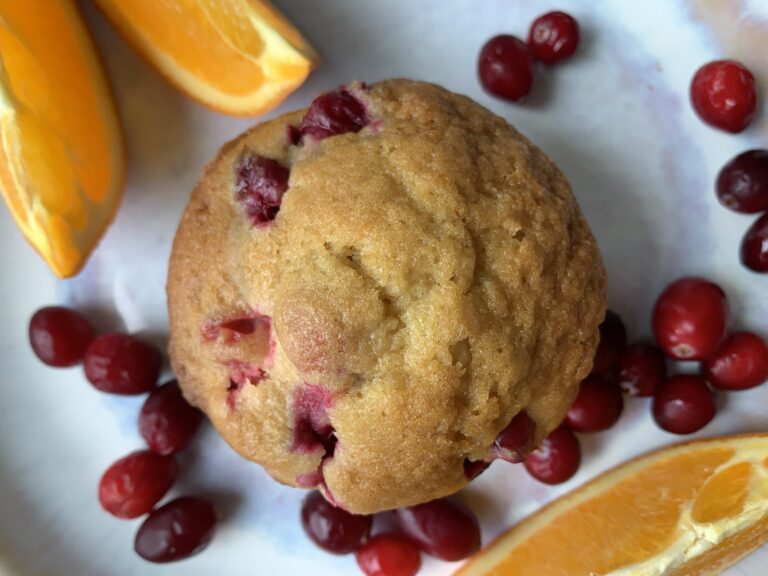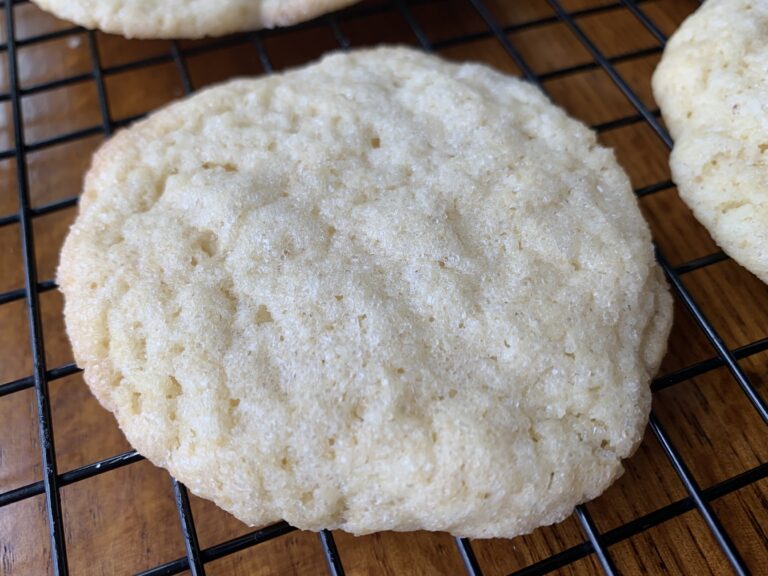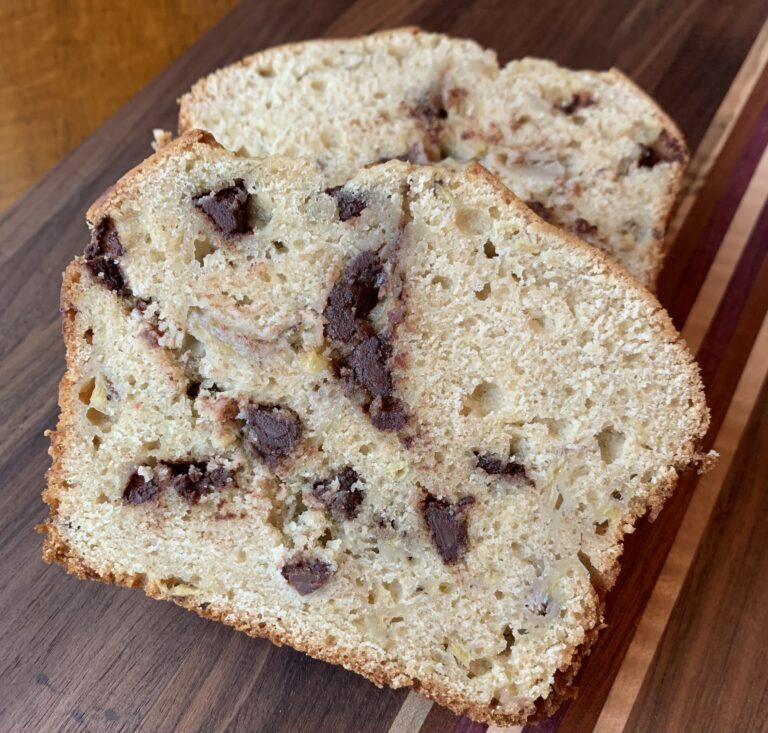How to Feed a Sourdough Starter
There are several ways you can feed your sourdough starter, but this method is quick, clean, and keeps your starter strong and healthy!
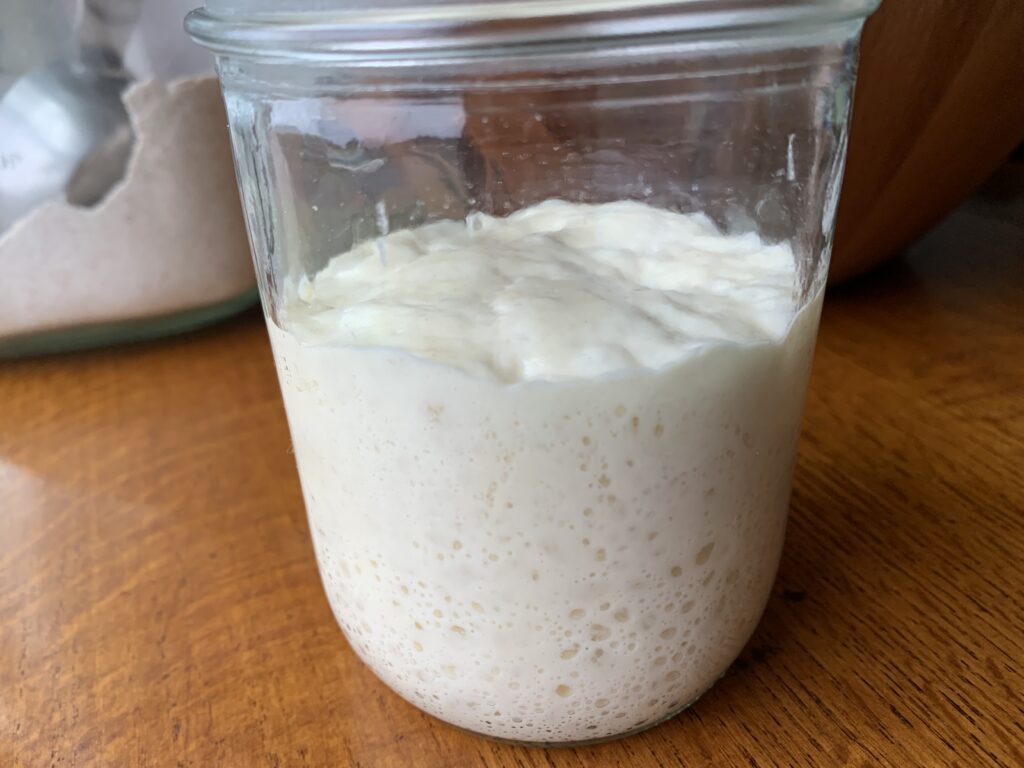
When I first made my sourdough starter, like many folks, I had no idea what I was doing. It was more of an experiment, and luckily, I was successful! When you’re just starting out, you are really just mixing flour and water. But over time and with consistent feeding, the fermentation process begins and that flour and water paste becomes an active starter.
After that, it’s just keeping your starter fed and happy, and using it! I started out keeping a large starter and feeding directly into it, but I’ve found a method that I much prefer for several reasons. If you’re interested in keeping a sourdough starter, I’ll begin by explaining how to make your starter. After that, I’ll explain the process I use for feeding my starter and why I prefer this method over others.
This post contains affiliate links. As an Amazon Associate I earn from qualifying purchases.
How to Start a Sourdough Starter
The concept of a starter may sound intimidating if you’re new to it. But I promise, it’s really simple! To understand how to care for your starter, it’s best to learn a little about how it works. A sourdough starter is natural, wild yeast. Instead of the dry active yeast found in the store, you can use sourdough starter to leaven almost any recipe!
The yeast in the sourdough starter mostly comes from the flour, and some in the environment. To make a sourdough starter, start by mixing equal parts flour and water. Some say it is easier to make a starter with whole wheat flour, but I initially made mine with all purpose flour and it’s worked for me just fine.
I recommend measuring in grams, as it is much more accurate than using measuring cups.
Day 1: Start by measuring 50 grams of water and 50 grams of flour in a jar, and mix thoroughly. Cover with a breathable cloth or paper towel with a rubber band, and leave it on your counter.
Day 2: The next day, take a clean jar and measure 50 grams of water and 50 grams of flour. Add 25 grams of the starter mixture from the day before, and mix thoroughly. Cover this jar and leave at room temperature for another 24 hours. The rest of the mixture in the original jar from Day 1 can be discarded. This early in the process, the “discard” is really no more than just flour and water, so you can try to make something with it, or just toss it.
Days 3-7: Repeat the process from Day 2 above. By now you may see a little activity in your starter, but don’t be alarmed if not. Since I used all purpose flour to start my starter, I didn’t see any activity until about Day 5.
Day 7: By Day 7, your starter should be nice and bubbly, and have a pleasant yeasty smell (similar to beer or other fermented foods). It is now ready to leaven any sourdough recipe! Just remember to feed it first and let it get nice and active before you use it to make bread. You can find my favorite sourdough boule here.
Caring for Your Sourdough Starter
Now that you have a sourdough starter, you will need to care for it and feed it regularly to keep it happy and working well for you. Remember, a sourdough starter is alive – so it’s your job to keep it alive! This isn’t hard to do though. A starter is pretty easy to care for and surprisingly resilient.
A good rule of thumb is if your starter is left out at room temperature, be sure to feed it every 24 hours. To prolong the time between feedings, just cover it with an airtight lid and stick it in the fridge. A freshly fed starter will be fine in the fridge for about a week.
This is because the cool temperature of the refrigerator slows the activity of the starter, so it doesn’t “eat” as much as quickly. On the counter at room temperature, the starter will be more active and use up its “food” (the fresh flour and water) more quickly, so it requires more food and a clean environment more often.
Keep in mind however that these are general guidelines. If your kitchen is extremely warm in the heat of summer, you might need to feed your starter more often than once a day. After keeping a starter for a while, you will learn when your starter needs to be fed just by looking at it and smelling it.
When a starter is happy and fed, it will be thicker and bubbly with a fresh yeast smell. When your starter is ready to be fed again, it will be deflated and less bubbly. When your starter is really “hungry”, it will be thinner in consistency and have a stronger sourdough smell.
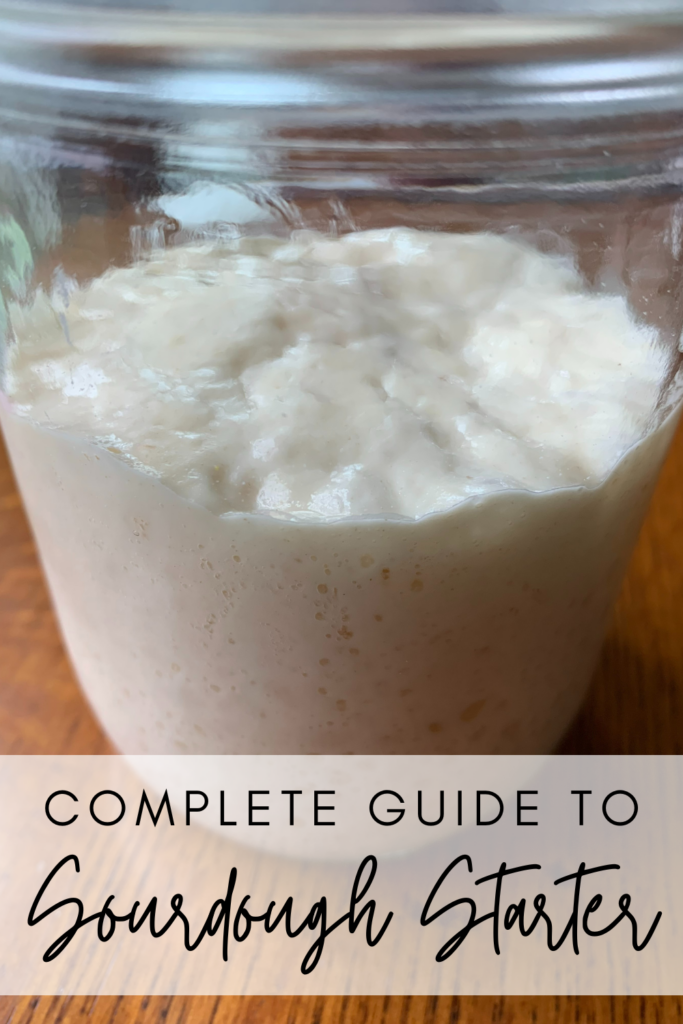
Feeding Your Sourdough Starter
When it comes to feeding your starter, there’s a couple different methods. You can either keep a large starter in a jar or crock, discard some and feed right back into the same jar or crock. I used to use this method, until I found a better way (in my opinion).
Now, I keep a small starter and feed into a fresh jar every time I feed it. Yes, you do end up cleaning more jars, but I’ve found my starter is stronger and more vigorous with this method. This is partly due to being able to feed it a larger portion (lower ratio of starter to flour/water paste, so there is more food for the starter). Also, this method keeps the starter in a clean environment…no dried up starter crusting the edges of the jar!
So here’s how I do it. In a clean jar, measure 50 grams of water and 50 grams of flour. Then, mix in 10 grams of your starter. Mix thoroughly, cover and let rest until active. Or, you can cover and store in the refrigerator. The rest of the starter can be added to your discard jar.
Yes – 10 grams is all you need to turn that 100 grams of flour/water paste into fresh starter! And it will keep your starter stronger than ever!
A Note on Discard
I have found that, with feeding my starter using this method, my discard is much more active for a longer period of time than it used to be. However, I prefer to use a very inactive discard for discard recipes. In my experience, the less active the discard is, the more moist the discard recipe turns out.
So, if I have freshly discarded starter, I like to leave it out an extra day before refrigerating it. This helps the discard break down and take on a more watery consistency, which I prefer for the discard recipes.
Making a Leaven with Your Sourdough Starter
To make a leaven with your sourdough starter, make sure you are using active sourdough starter. “Active” means that it should have been fed within the last 4-12 hours, and it is bubbly and puffy – it should be nearly doubled in your jar.
I recommend using bread flour to make your leaven. The higher protein content in bread flour will make a nice strong leaven.
How much leaven you make depends on how much starter the recipe calls for. You should always aim for a ratio of 10:1 – that is, 10 grams of flour/water paste for every gram of starter. So, if you need 100 grams of starter for your recipe, mix 50 grams of water + 50 grams of flour + 10 grams of starter. The flour/water paste equals 100 grams and the starter equals 10 grams, so there is that 10:1 ratio.
And yes, you will have about 10 grams of leaven left in your jar if you only need 100 grams for your recipe, but that’s just fine! It’s actually nice to have a little extra, since some sticks to the sides of the jar.
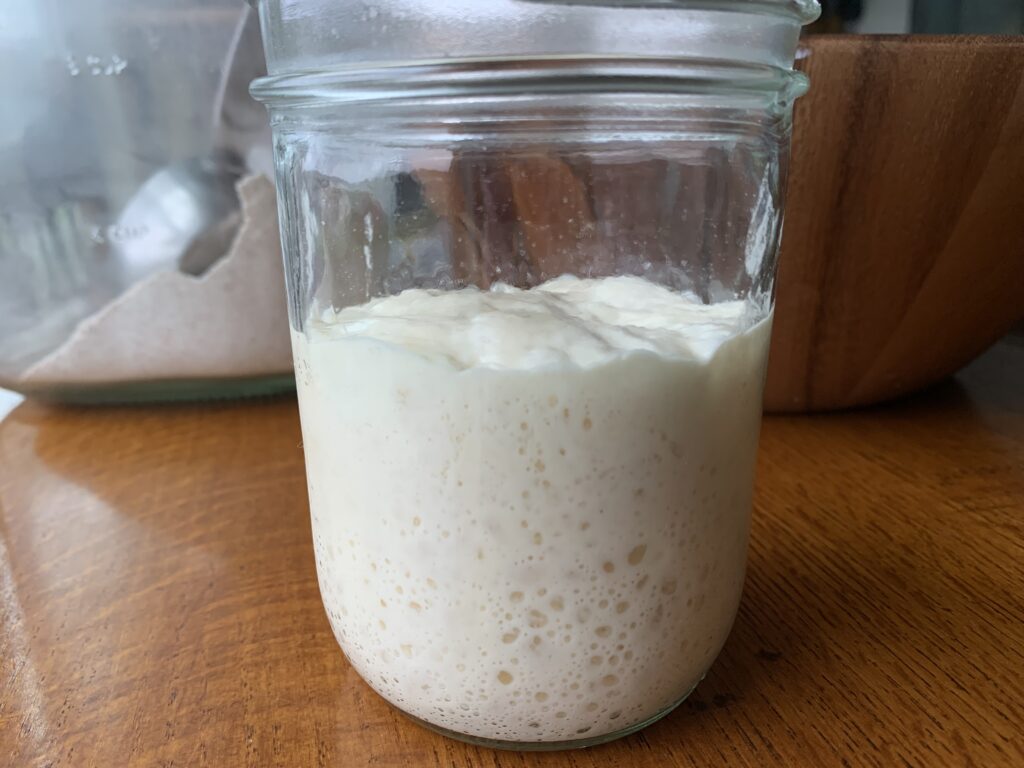
FAQ
What is the difference between a leaven and a starter?
Making a leaven is basically the same process as feeding your starter. In fact, the whole point of a leaven is to essentially make a separate starter, and you will be using that entire separate starter in a recipe. However, there are a couple slight differences. I use bread flour to make a leaven, and regular all purpose flour to feed my starter. Also, you can make a leaven of any size to accommodate a recipe, whereas I always keep my starter the same size at around 110 grams.
What if I forget to feed my starter?
Don’t worry too much! Once established, sourdough starter is surprisingly resilient. If your starter has been out on the counter and is ready to be fed, but you’re rushing out the door, just throw a lid on it and stick it in the fridge. It will be just fine until you come back – just remember to feed it as soon as possible.
What do you keep your starter in?
I use good old fashioned mason jars. I have plenty of them and they work perfect. The wide-mouth pint size is great for keeping my starter and a smaller leaven. I use the wide-mouth quart size jars for a leaven of 200 grams or larger.
When my starter is in the fridge, I use the lid and band to cover it. When it’s out on the counter, I use a cloth or paper towel and secure it using the band.
Whether you’re brand new to sourdough or just curious how others keep their starters, I hope you found this post helpful. If so, please leave a comment below and share. Thanks for reading!

